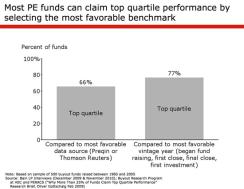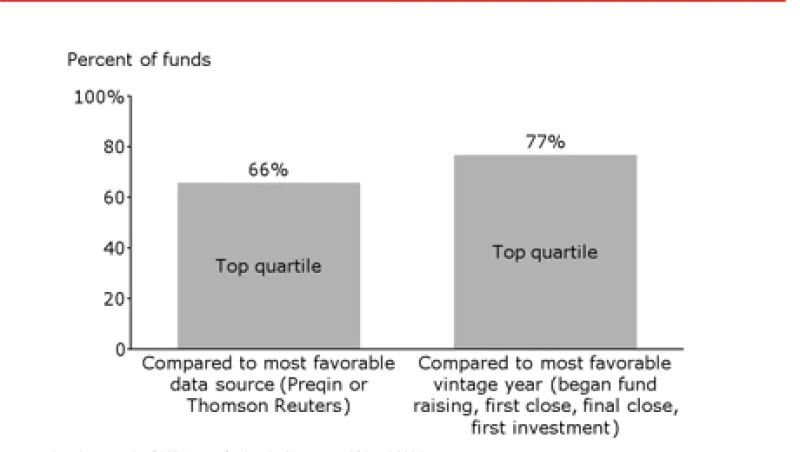Why is it that whenever I’m navigating the world of private equity I get the distinct impression that I’ve been transported to Lake Wobegon? (“Where all the children are above average.") Perhaps it’s because almost every PE manager I run into claims – quite vehemently – that they are in the top quartile of funds in terms of performance. The problem here is obvious: 100% of funds can’t be in the top 25% ... so what gives?
Interestingly, our friends over at Bain show that the real culprit here isn’t the PE funds; it’s actually the data providers and sources used by these funds to benchmark their returns. As it turns out, the data is so messed up that between two thirds and three quarters of PE funds can LEGITIMATELY claim to be in the top quartile of funds by cherry-picking their benchmarks and criteria (see chart below).
In short, all those funds that claim to be top quartile... they are. What they aren’t telling you, however, is that being “top quartile” isn't hard to do. In fact, I'd suggest that those funds that are not top quartile probably haven’t spent enough time looking for the right data providers and benchmarks that will get them that top quartile status.
For example, I was recently sent a graphic that showed how a single fund with a 15% IRR could be LEGIMATELY placed in the bottom, 3rd or top quartiles simply depending on the source of the data used for the benchmarks (e.g. Cambridge, Thomson, or Preqin). In other words, the big data providers of the PE world offer remarkably different views of performance, and this then allows PE funds to pick the benchmark that shows them in the best light.
In turn, the PE benchmarks end up being worthless.
The problem, however, is that the Boards of Directors of pensions and sovereigns may not be wise to the fact that these “quartiles” are worthless indicators and end up giving a PE mandate to a fund based on misleading information. And I find that rather frustrating. So, can somebody please fix this data problem and get us some standardized PE benchmarks? It's time!





